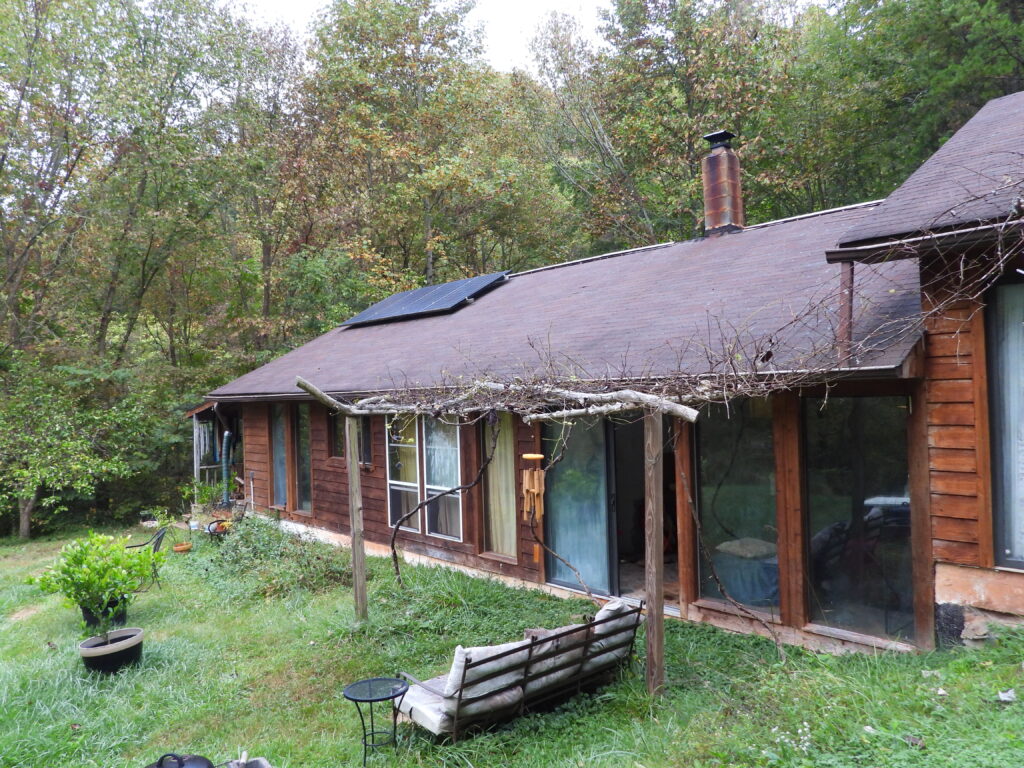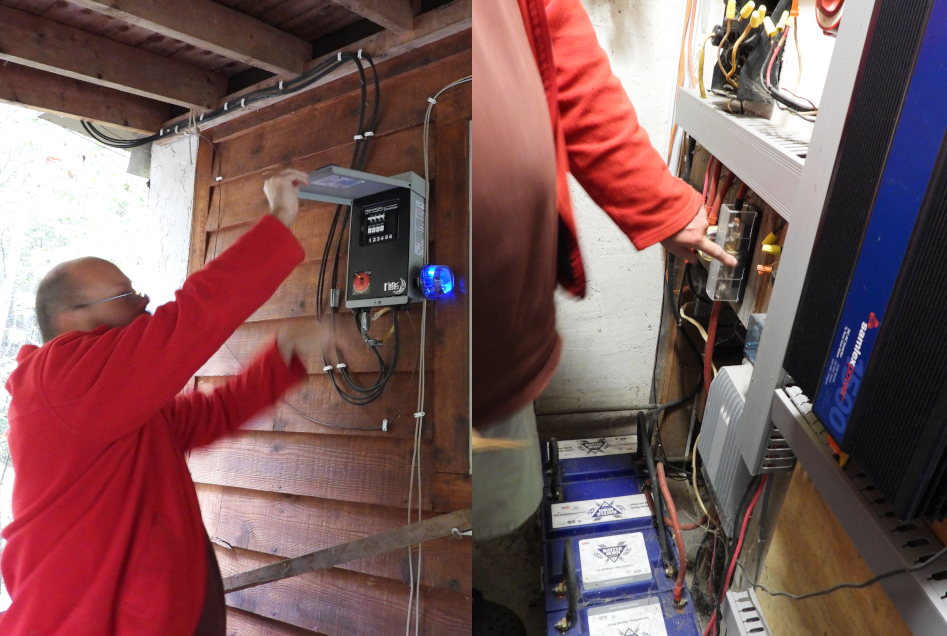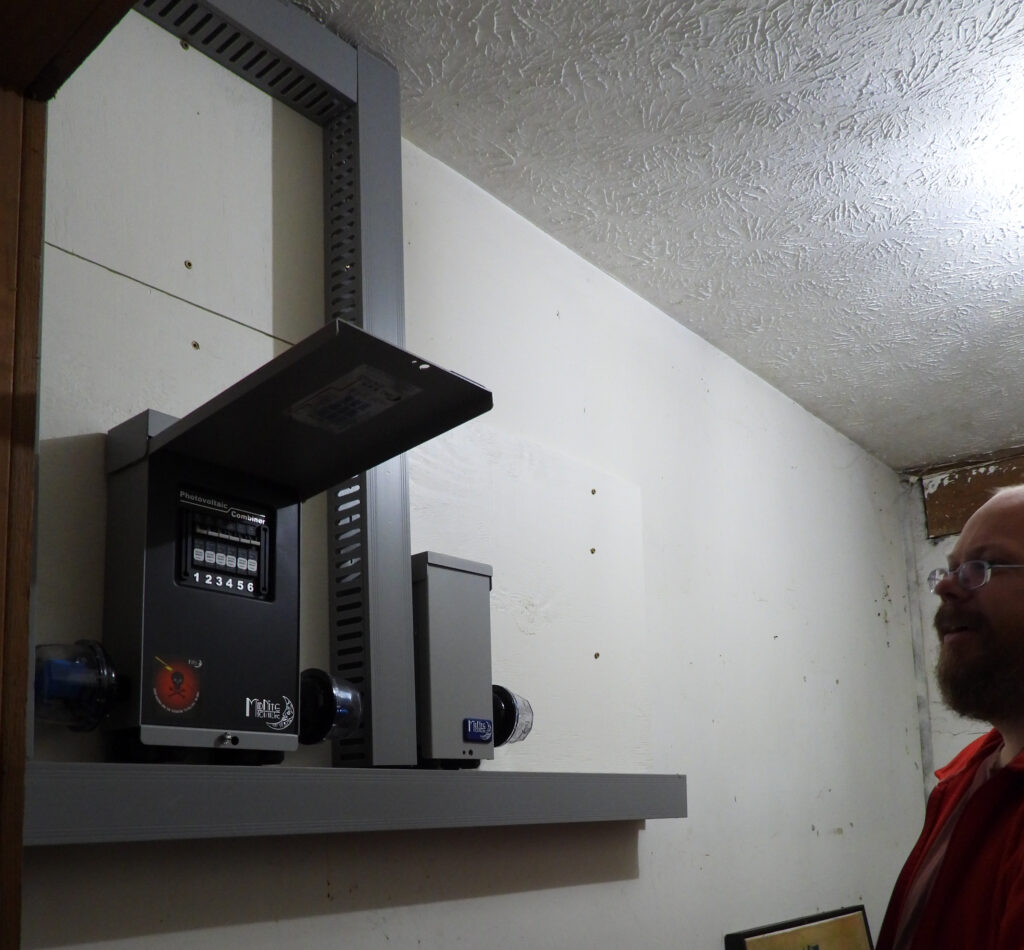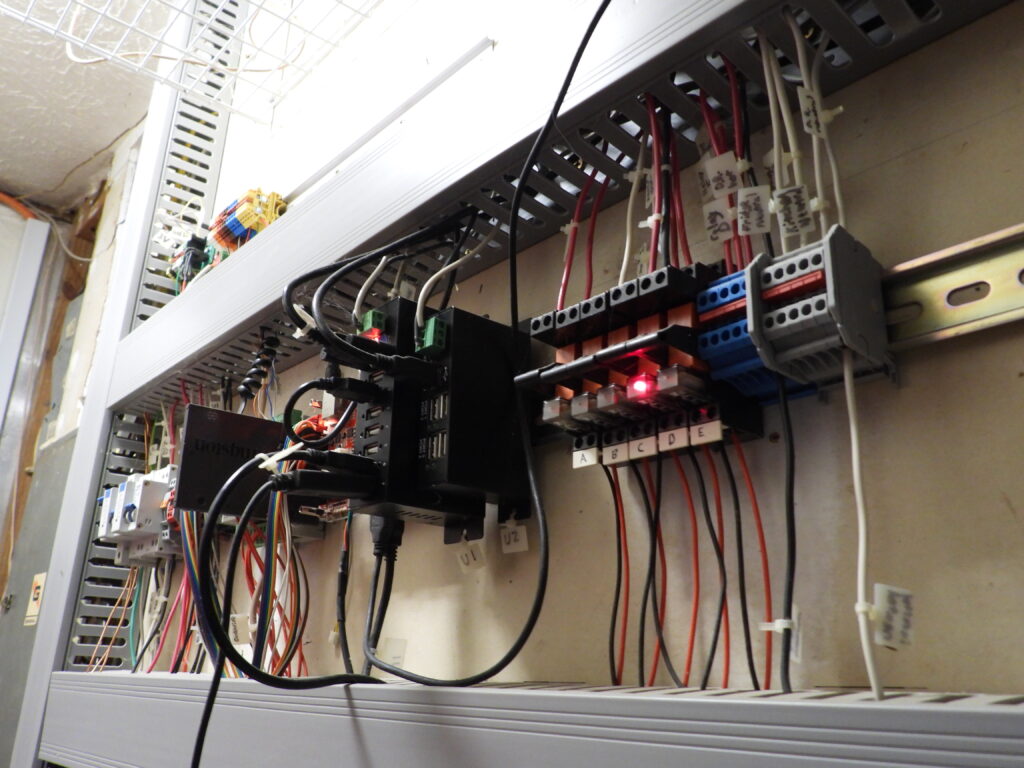Remember my brother, Joey’s, underground solar house? Thirteen years later, I dropped by for a tour to see how it’s aged…and been reenvisioned.
Upgrade, round 1

Five years ago, Joey took out the old panels and installed a 1-kilowatt solar array.
It cost him about $2,000 at that time to pay for the panels and racking to install the new panels on the roof, although he notes that prices have gone down considerably since then. (More on that later.)
This allowed him to add on a satellite internet system (1.2 kwh) and a fridge/freezer (0.5 kwh).
Upgrades, round two

A couple of years later, he spent $3,500 on four lithium-ion batteries, in part to bring him up to speed for the new panels and in part to prepare for further upgrades. Since then, he’s started adding in all of the associated wiring for upgrade part 2, the goal of which is to let him add a hot-water heater (6 kwh), an electric vehicle (variable, depending on how much you drive), and an induction stove (2 kwh) while never again dealing with low-power days.
The new system, which he hopes to bring online within a year or two, will involve completely covering the roof in solar panels (a roughly 10-kilowatt array). The solar panels aren’t anywhere near the most expensive part since he’s planning on buying them by the pallet-load, which will cost anywhere from $2,700 to $5,200 for 25 to 30 panels adding up to 10 kilowatts. He hasn’t pulled the trigger on this because, as we learned, delivery of a pallet to a rough-drivewayed homestead can be tricky! (Plus, he needs to change out his roof first.)

Other parts of the new system include about $500 on wires, $550 on charge controllers (about which, more shortly), $1,000 on combiner boxes/breakers/lightning arresters, and a whopping $3,200 on roof mounts. Total estimated cost (including the recently purchased batteries): $13,500.
(Of course, the full math also includes the federal tax credit he’ll get back as well. In some areas, there are )

Sounds like a massive investment, right? That price tag still represents a huge savings over hiring an installer to come in and build the system. Joey estimates the installer cost would have been at least double what he plans to pay.
A unique charge controller
Joey wanted me to mention that his choice of charge controllers is very off-beat. He loves living far away from civilization, where birds and crickets are the only noises he has to deal with. He wasn’t willing to disrupt that tranquility with the usual charge controllers, which run a fan constantly.
Instead, he chose a cheap Epever charge controller that’s silent…but only handles one or two kilowatts. For upgrade 2, he installed more controllers, but will still lose half his power.
He’s okay with this because it ensures that, on a cloudy winter day, he’ll still have enough power. Since solar panels are so cheap, it’s now okay to overdo that part of the system.
Another side note: 24-volt system
During the first upgrade, Joey changed over from a 12-volt to a 24-volt system, which required him to change out the lights in the house. (You can decide whether you’re running a 12-volt, 24-volt, or 48-volt system based on the way you wire the batteries.) The benefit of a 24-volt system is that it lets him use industrial automation equipment, versus the automotive equipment you’d use with a 12-volt system. It also lets his charge controllers handle twice as many panels as they could otherwise.
What happened to the old panels?
I’m so glad you asked! That’s the topic of another post. Stay tuned!
I’m intrigued by the statement “while never again dealing with low-power days.”
Is this a function of the massive battery size (sorry, can’t read the labels on the batteries in the photo), increasing the array size by an order of magnitude or by running a home automation network that lets him cut key consumers when supplies are tight (as I read on his blog)?
I’d guess it’s a combination of all 3 elements, but is there a hard rationale that went into it, like battery size x array size x peak demand >= some threshold value?
I’m asking as I’m limited by array size (and cloud cover) and thus came up with some ridiculous battery size I’d need to keep the lights on. Thus, any experience regarding weighting the factors would be much appreciated.
Combination of the array size and ability to control major loads. The battery is mostly irrelevant, it only needs to be large enough to handle the rate of charge of the large array.
Okay, many thanks!
As I mentioned on the solar flashlight entry, I’ve been folowing the solar/wind power generation concept for almost 70 yrs now. There’s only two reasons to install solar/wind capabilites– (a) because you live so far off grid that the cost of tying into the commercial grid is prohibitive, or (2) for energy security. Eg- I installed 600W of solar panels to run my well pump should the grid ever suffer a long term failure (SHTF situation). I could live without big screen TV, but not without water.
Your brother (assuming he could easily have grid power) will have spent on the order of >$10^4 for a system that, with some inconvenience in regards reliability and usage restrictions, will save him on the order of $10^2/month or less, given the conservation efforts he probably will need to employ.. This means that it will be 10-15 yrs before the system pays for itself– just about the time when the system will need to be replaced…This doesn’t allow for the cost of unexpected repairs from storm damage, parts failures, etc or for the high cost of battery replacement every five yrs or less.
Here in WI, we go two straight weeks and more repeatedly in the winter without appreciable sunlight. While the panels would still generate a little juice, we’d still need a huge battery bank capable of supply energy for at least two weeks at a time. In the sunbelt, batteries are only asked to supply about two days worth of storage.
It’s a niche solution for some, but not all.
I see your point from a financial perspective. There are also non-monetary incentives for some (not all), e.g. the wish to de-carbonise their energy consumption ahead of the grid (esp. in countries where nuclear energy is considered grren); the idea of energy independence; the pleasure of harvesting your own power/ running your own energy infrastructure. Plus, a 10-15 yr payback time is inconceivably long for a corporate investment, but not too bad from a private houshold’s point of view. A lot of cost occurs in 1-2 decades long cycles, e.g. buying cars, raising children, planting fruit trees. So, if I have the money now to buy me 10, 15, 25 years of low/ no cost energy, that’s something I’d consider privately.
Using industrial industrial automation equipment is a smart idea. That stuff’s built to last. Up until fairly recently we had a machine at $WORK with a PLC for which they stopped selling spare parts in 2010. 🙂
Personally, with lithium ion batteries I’d want them in a 120 min fireproof enclosure unless they’re LiFePO4. It doesn’t happen often, but when a lithium ion battery starts burning because of a thermal runaway it’s very difficult to put out. My electric motorcycle has the batteries in an aluminium box. And it is stored and charged in a concrete garage.
For a lot of houses in northern areas (say above the 45th parallel north), heating and not electrical equipment is the most significant energy usage. My average electricity use (over 12 years of data) is 4.5 kWh/day (16.2 MJ/day). But my gas heating uses on average 19.3 kWh/day (69.6 MJ/day). So investing in insulation or maybe geothermal energy would be much more useful for me then solar power.
Great points, especially about the benefits of insulation and other means of making heating efficient/green. Joey does a great job of that already with his underground house and wood heat, but the rest of us likely have a ways to go.
[…] my last post, I shared my brother’s journey to upgrade his off-grid home from the multi-decade-old original … that meshed with his needs in the modern age. But what did he do with the old […]